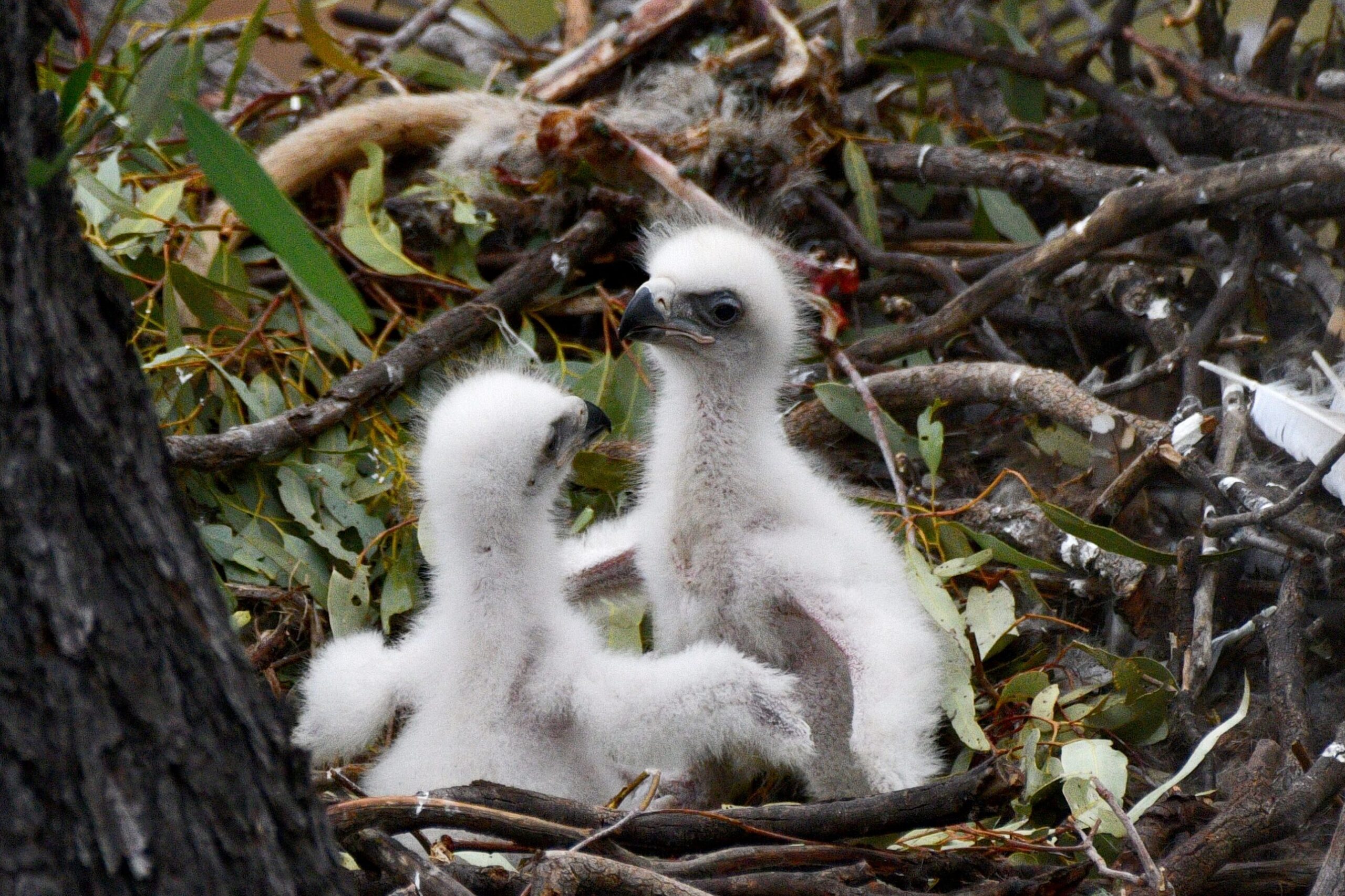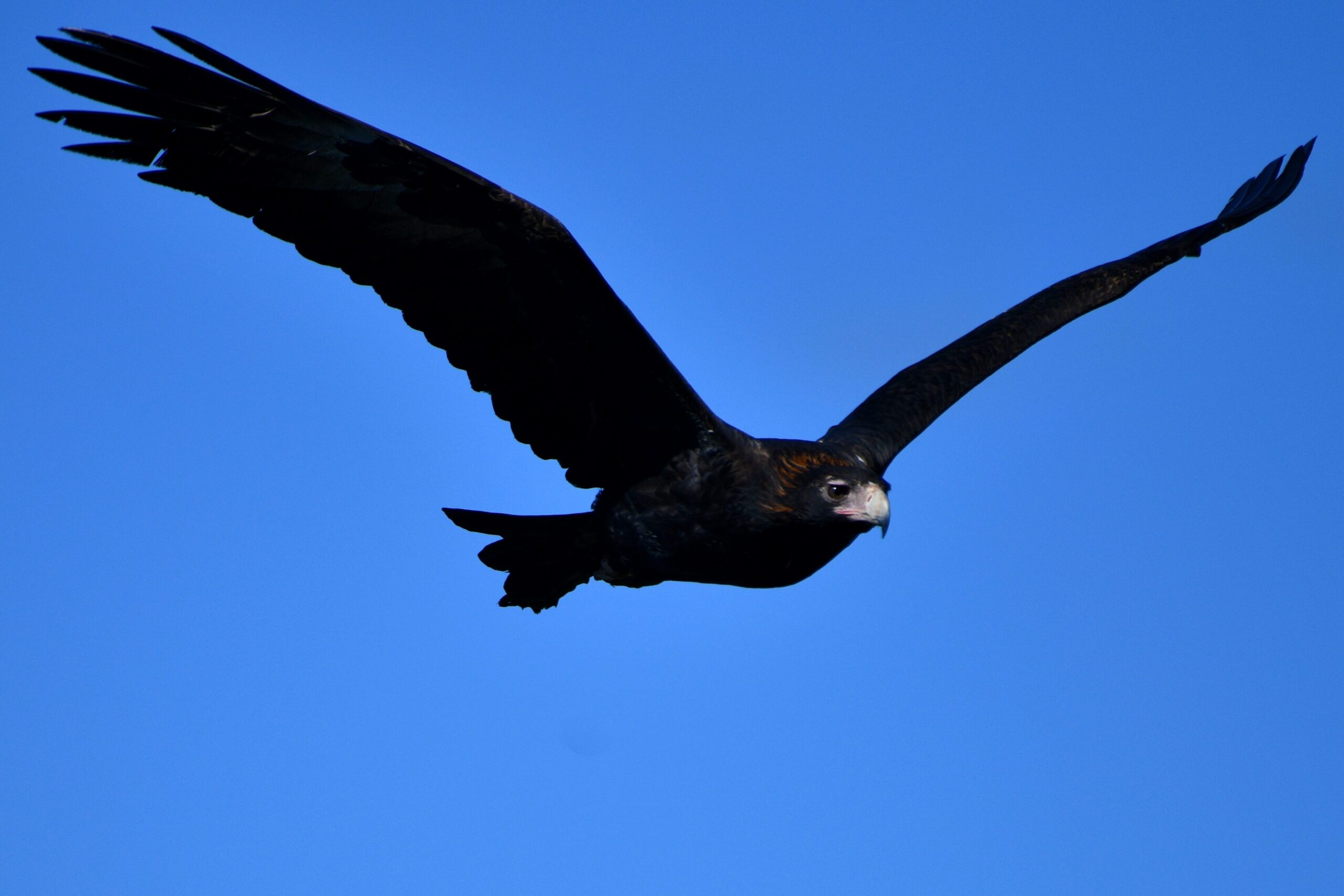Chapter 1: A rare vantage

During the winter of 2022, while travelling in Queensland, I approached the top edge of a gorge and noticed a wedge-tailed eagle (Aquila audax) fly into it. Looking to where she appeared to have come from I spotted a nest containing two eggs. Being a nature lover and keen wildlife photographer, I felt incredibly lucky, given that eagle nests are usually beyond our range of sight. Figuring that she was incubating the eggs and wouldn’t be off them for too long, I headed back to the car for my long lens. Sure enough, by the time I’d returned so had she.
Dad was on sentry duty across the other side of the gorge and I headed off to camp, returning the next morning after a rainy night to find the mother still there and sopping wet.
So began a remarkable extended natural history experience. I continued on my way, and settled for a while about 500km from the nest, returning regularly during the next two and and a half months.
Chapter 2: New life

Wedgie eggs take about five weeks to hatch. But of course, I didn’t know when they’d been laid. One day, about three weeks after my discovery, I had a strong gut feeling the eggs had hatched. Unable to resist, I made the journey back to the nest to discover two fluffy little white chicks. With my limited knowledge of wedgies, but reasonable knowledge of chooks, I figured these eaglets were about a week old. Moving quietly and respectfully, I settled in and watched them for a few days, careful not to draw them to the attention of other humans.
They weren’t very active, sleeping most of the time, but when they were up and about, one was already showing dominance over the other.
Surprisingly, neither of the adults were at the nest during the day. I guess, being the apex predator of the sky, they felt no need to be there to protect the babies. I usually knew where at least one of the adults was, but quite early in this visit the male came out of nowhere from behind, swooped to within what felt like a couple of metres of me and followed up with a few orbits over where I was hunkered down among the rocks and spinifex. He was very clear about who the alpha male was in this scenario.
Chapter 3: Nature’s harsh truth

Three weeks later, I made the journey again. I was looking forward to seeing the growth of the babies, but soon discovered there was now only one. It’s not uncommon, it seems. The dominant chick turfs the other one out, or the parents decide there’s only enough tucker around to support one baby.
I didn’t know the sex of the remaining chick, but for the sake of not calling him “it” I decided he was a boy, and called him “Werner”, after a lifelong friend who was struggling with cancer at the time. Already his fledging had begun, and he was exercising his wings and flexing his muscles, at the ripe old age of about a month.
Chapter 4: Words on the wing

Thoroughly invested in observing Werner’s development by now, I was back there after another 10 days or so and the difference was phenomenal. He was a lot bigger than I expected, with coloured feathers and a frown that any fully fledged eagle would be proud of. He was still getting plenty of sleep and exercise, stretching those wings, flapping and jumping off the deck of the nest.
The highlight of this visit for me was witnessing a conversation between the adults on a branch across the other side of the gorge. It resulted in them taking off together, continuing their discussion as they launched.
Chapter 5: Being accepted

A week later I made the journey again, aware of how special this experience was. Werner was again bigger and stronger and almost fully fledged, continuing with his preparation for adulthood. One evening he was asleep and the nest was in shade, but I could see his dad across the gorge, resplendent in the evening sun, so decided to see if I could get close enough to take some portrait shots of him.
He’d been becoming more comfortable with my presence on each of my visits, so I approached slowly, got to within about 10m and he quite casually posed for the camera, only leaving when Mum came along and both parents flew away.
Chapter 6: Flight lessons

I felt I was witnessing a masterclass in flying during my final visit. Dad flew onto a nearby branch, turned into the wind and flapped his magnificent wings while remaining perched. Both parents were flying close to the nest and young Werner, now looking like a fully qualified wedgie, was taking it all in. So after some serious thought, a feed, some more stretching and exercising, it was time to give it a crack.
What a privilege to have been allowed to watch the growth of our king of the sky from egg to young adulthood. It was something I’ll always be grateful for.
